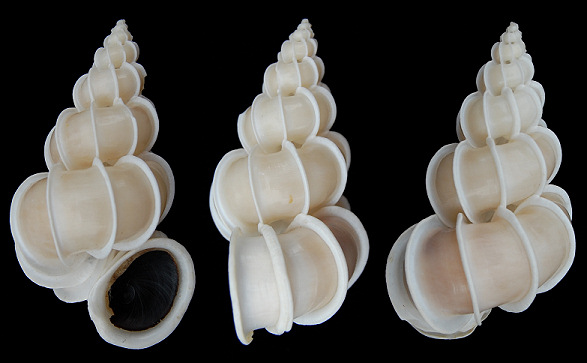|
Epitonium scalare (Linnaeus, 1758) |
|
The Precious Wentletrap |
|
|
|
Philippines (60 mm.) |
|
The Precious Wentletrap or Staircase Shell is so exquisitely formed that it is no wonder the early collectors in the 18th Century valued it above rubies and paid prices for which it might have been copied in gold and studded with diamonds. The tapering spiral whorls of this small, dainty shell which reaches not much more than two inches in length, are not sutured together as in the case with most spiral univalves. There is a space between them all the way from the nucleus to the aperture and the whole is covered with very regular and ridge-like varices which have the appearance of a white latticework cage enclosing the glossy whorls, or the treads of a spiral staircase. At the height of their popularity these shells would fetch several hundred pounds apiece and reportedly were so in demand that Chinese artisans counterfeited the shells using rice flour. The Emperor Francis I, husband of Maria Theresa, paid 4,000 guilders for one. They held pride of place in the cabinets of the Empress Catherine of Russia and the Queen of Sweden. Though no longer considered rare, they are still greatly admired and fine specimens as much coveted as ever, but their prices nowadays are a modest fraction of earlier times. |
